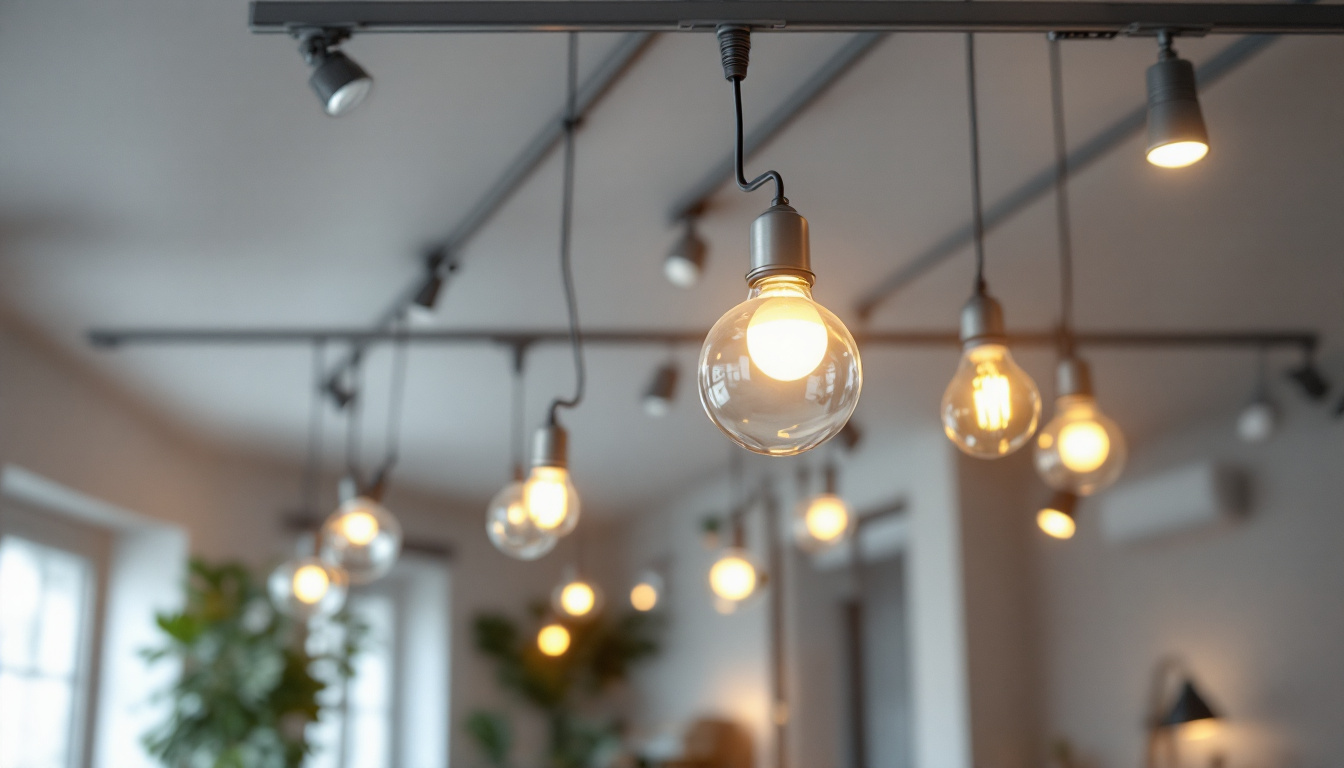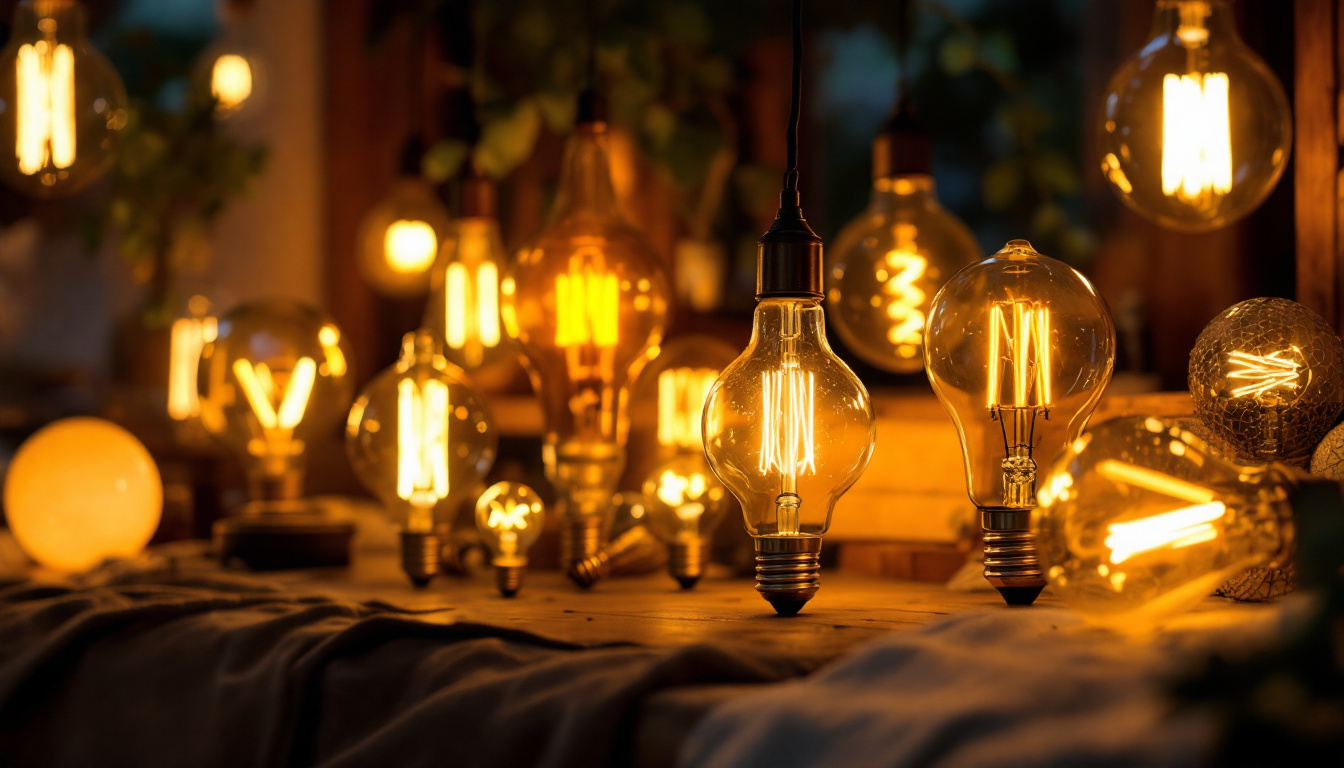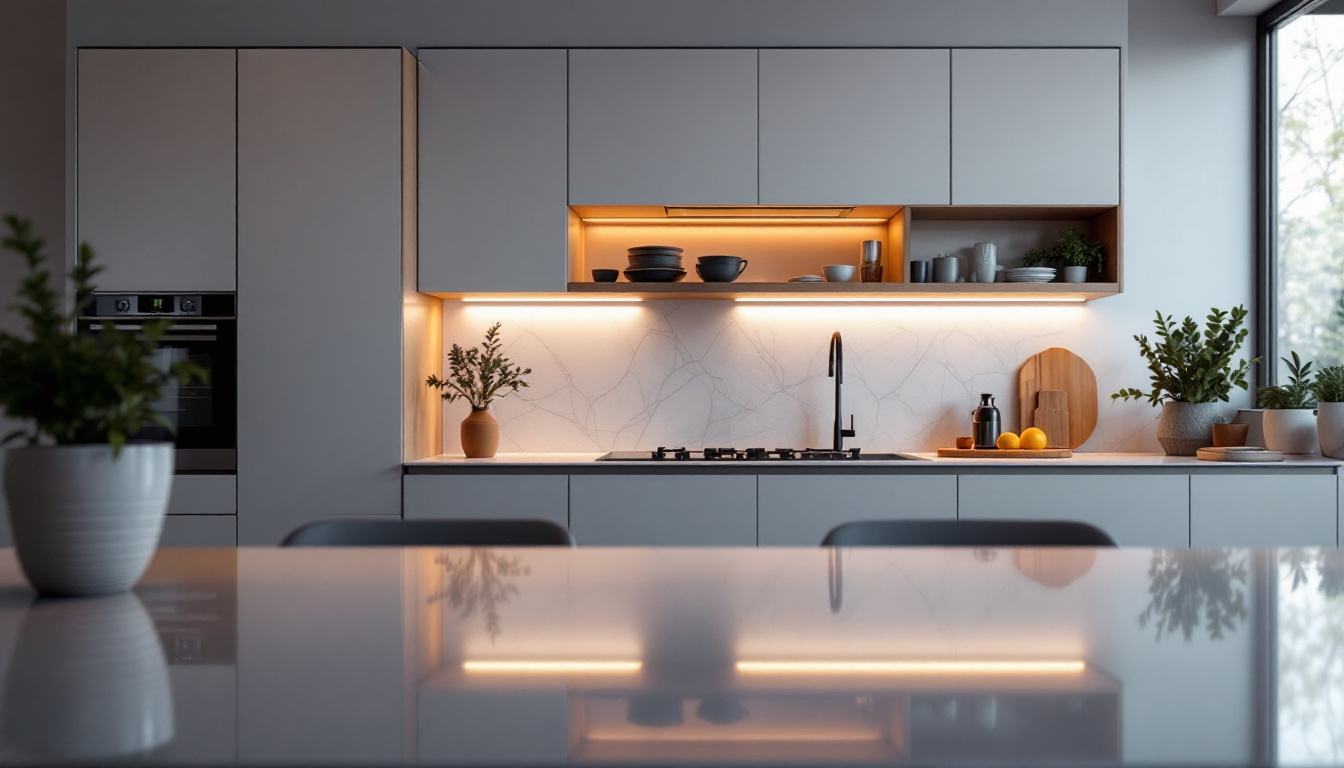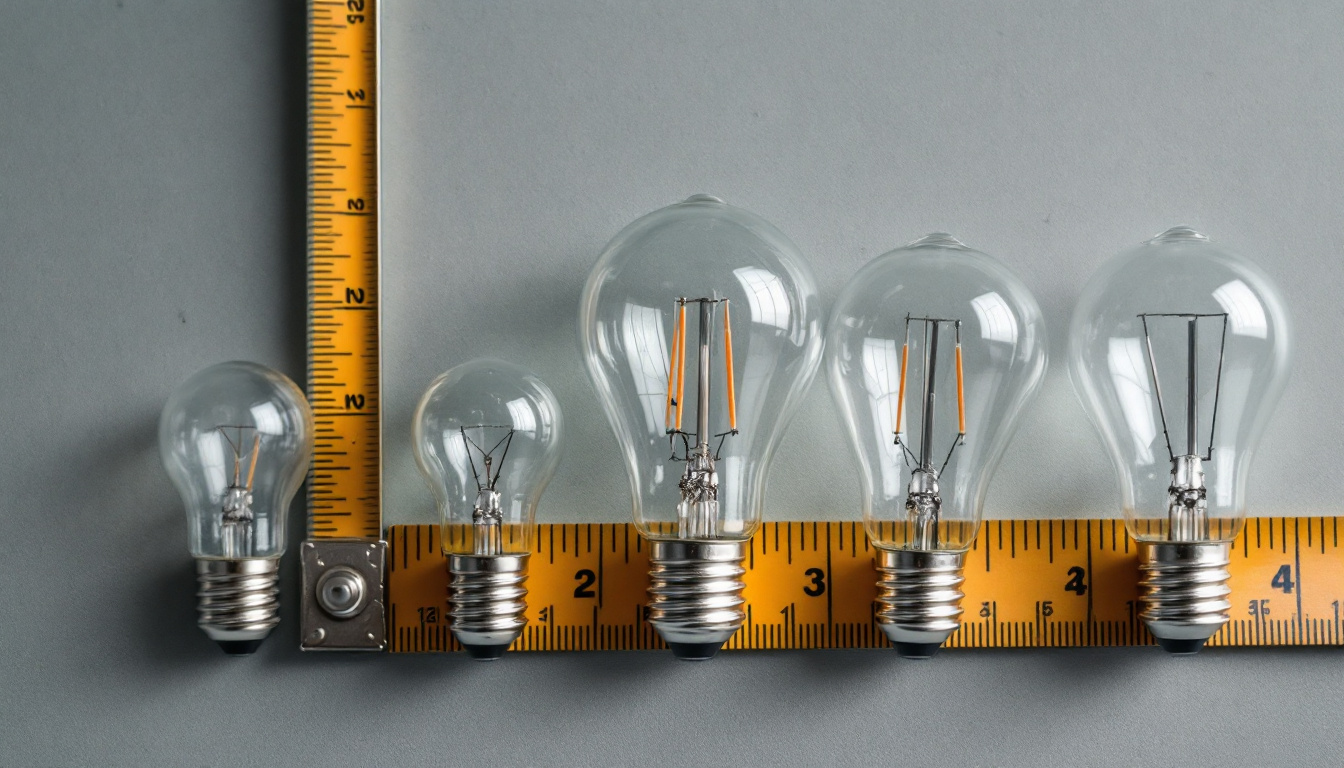
As the demand for versatile and efficient lighting solutions continues to grow, track lighting has emerged as a popular choice among homeowners and businesses alike. For lighting contractors, understanding the nuances of track lighting light bulbs is essential for delivering optimal results to clients. This article serves as a comprehensive checklist for contractors, providing insights into the various types of track lighting bulbs, their applications, and important considerations for installation.
Track lighting systems are designed to provide flexible illumination in various environments. These systems consist of a track, which is mounted to the ceiling, and a series of light fixtures that can be adjusted along the track to direct light where it is needed most. This adaptability makes track lighting ideal for both residential and commercial spaces. In a home setting, track lighting can highlight artwork, illuminate workspaces, or create a cozy atmosphere in living areas. In commercial environments, it can be used to accentuate product displays or provide general lighting in retail spaces.
When selecting light bulbs for track lighting, it’s crucial to consider the specific requirements of the system. Different types of track lighting systems may require different bulb types, wattages, and shapes. Understanding these factors will ensure that the lighting is not only functional but also aesthetically pleasing. Additionally, the choice of bulbs can significantly impact energy consumption and maintenance costs, making it essential to choose wisely for both immediate and long-term benefits.
There are several types of track lighting systems available, each with its own unique features. The most common types include:
When it comes to selecting bulbs for track lighting, contractors must consider several factors, including the desired ambiance, energy efficiency, and bulb longevity. Here are some common bulb types used in track lighting:
In addition to these common bulb types, it’s worth exploring newer technologies such as smart bulbs, which can be controlled via smartphone apps or voice commands. These bulbs can change color and intensity based on user preferences, adding a layer of convenience and customization to track lighting systems. Furthermore, considering the placement of track lighting fixtures is essential; strategically positioning them can enhance the overall design of a space while maximizing functionality. Properly angled fixtures can create dramatic effects, highlighting architectural features or artwork, while also ensuring that work areas are sufficiently illuminated for tasks.
When working with track lighting, there are several key considerations that contractors should keep in mind to ensure successful installations and satisfied clients.
Understanding wattage and lumens is crucial for selecting the right bulbs for track lighting. Wattage indicates the amount of energy consumed by the bulb, while lumens measure the amount of light produced. Contractors should assess the space and determine the required lumens to achieve the desired brightness.
For instance, a well-lit kitchen may require around 300-400 lumens per square meter, while a cozy living room may benefit from lower lumens for a softer ambiance. Balancing wattage and lumens will ensure that the lighting is both efficient and effective.
Moreover, it’s important to consider the specific activities that will take place in the space. For example, areas designated for reading or detailed work may necessitate higher lumens to reduce eye strain, while spaces meant for relaxation can be illuminated with softer, warmer light to create a calming atmosphere. By tailoring the lighting to the specific needs of each room, contractors can enhance both functionality and comfort for their clients.
Color temperature plays a significant role in the overall feel of a space. Measured in Kelvin (K), color temperature ranges from warm (around 2700K) to cool (above 5000K). For residential settings, warm white light is often preferred, while cooler temperatures may be suitable for commercial spaces.
Contractors should discuss color temperature options with clients, as this can greatly impact the mood and functionality of a room. Providing samples or visual aids can help clients make informed decisions. Additionally, it’s beneficial to educate clients on the psychological effects of different color temperatures; for example, warmer lights can promote relaxation and comfort, making them ideal for bedrooms and living areas, while cooler lights can enhance focus and alertness, making them suitable for workspaces and kitchens.
Not all bulbs are compatible with every track lighting fixture. Contractors must ensure that the selected bulbs fit the specific track system and fixture type. It’s essential to consult the manufacturer’s guidelines to avoid compatibility issues.
Additionally, some fixtures may have specific requirements regarding bulb shape and size. For example, a narrow fixture may require a smaller bulb, while larger fixtures may accommodate standard-sized bulbs. Taking the time to verify compatibility will prevent installation delays and ensure client satisfaction. Furthermore, contractors should also consider the aesthetic aspects of the fixtures; the design and finish of the track lighting should complement the overall decor of the space. By selecting fixtures that align with the client’s style preferences, contractors can enhance the visual appeal of the installation while ensuring functionality.
Proper installation is key to maximizing the effectiveness of track lighting. Following best practices can help contractors achieve optimal results and minimize potential issues.
Before installation, contractors should carefully plan the layout of the track lighting system. This involves determining the best locations for the track, considering the placement of furniture, and identifying areas that require focused lighting.
Using a layout diagram can help visualize the placement of the track and fixtures. This approach ensures that the lighting is both functional and visually appealing, enhancing the overall design of the space.
Safety is paramount when installing track lighting. Contractors should ensure that the electrical system can support the wattage of the selected bulbs. Overloading circuits can lead to potential hazards, including fire risks.
It’s also important to follow local electrical codes and regulations during installation. This may involve consulting with a licensed electrician to ensure compliance and safety. Proper grounding and secure connections are critical for the longevity and safety of the lighting system.
After installation, testing the track lighting system is essential. This step allows contractors to ensure that all fixtures are functioning correctly and that the desired lighting effects have been achieved. It’s an opportunity to make adjustments as needed, such as repositioning fixtures or changing bulb types.
Encouraging clients to test the lighting at different times of day can help them assess the effectiveness of the installation. This feedback can be invaluable for future projects and client satisfaction.
Over time, dust and debris can accumulate on light fixtures and bulbs, affecting their brightness and appearance. Contractors should recommend regular cleaning, using a soft cloth or duster to gently remove dust from fixtures and bulbs.
For more thorough cleaning, clients can turn off the power and use a damp cloth to wipe down fixtures. It’s important to avoid using harsh chemicals that could damage the finish of the fixtures or the bulbs.
Bulb replacement is a routine part of maintaining track lighting systems. Contractors should inform clients about the expected lifespan of the bulbs they’ve installed, as well as signs that indicate when a bulb needs to be replaced.
Encouraging clients to keep spare bulbs on hand can minimize downtime and ensure that the lighting remains consistent. Providing guidance on safe bulb replacement techniques will also enhance client confidence in maintaining their lighting systems.
Track lighting offers a versatile and stylish solution for illuminating various spaces. For lighting contractors, understanding the intricacies of track lighting light bulbs is essential for delivering high-quality installations that meet client needs. By following the checklist outlined in this article, contractors can ensure that they are selecting the right bulbs, adhering to best practices during installation, and providing clients with the knowledge they need for ongoing maintenance.
Ultimately, a well-executed track lighting installation can significantly enhance the functionality and aesthetics of a space, making it a valuable investment for homeowners and businesses alike. With careful planning and attention to detail, lighting contractors can excel in this evolving field and contribute to the creation of beautifully lit environments.
Ready to elevate your track lighting installations with the finest selection of light bulbs? Look no further than LumenWholesale, where we provide contractors with exceptional, spec-grade lighting products at unbeatable wholesale prices. Our commitment to quality and affordability ensures that you can light up any space with confidence. Say goodbye to inflated markups and hello to hassle-free bulk buying with free shipping. Don’t compromise on quality or value—choose LumenWholesale for your lighting needs and make every project shine. Discover the perfect blend of quality, affordability, and convenience today by visiting Wholesale Lighting at the Best Value.

Discover the ultimate guide to retro LED light bulbs with our essential checklist tailored for lighting professionals.

Discover the innovative strategies lighting contractors use to select and implement shatter-proof light bulbs, enhancing safety and durability in various environments.

Discover the ultimate guide to enhancing your kitchen with LED lights for cabinets.

Discover the essential guide to incandescent bulb base sizes tailored for smart lighting contractors.